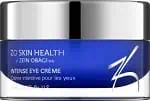
The month of May is known for celebrations such as Mother’s Day and May Day. But it’s also Skin Cancer Awareness month, and based upon the staggering statistics, it’s no wonder why. Here are just a few of the worrisome facts, from the Skin Cancer Foundation:
- During the past thirty years, more people have suffered from skin cancer than all other kinds of cancer, combined.
- One out of five Americans will end up getting skin cancer in their lifetime.
- Nearly 10,000 Americans die from melanoma each year.
- More than $8 billion is spent every year in America on skin cancer treatment.
- Approximately nine out of ten non-melanoma skin cancers are due to UV sun radiation.
Although many of us enjoy soaking up some sunshine and natural Vitamin D at the beach or other outdoor places, doing so without adequate protection isn’t healthy and greatly increases your chances of developing skin cancer later in life. And in fact, quality vitamin supplements are a far safer way to get your Vitamin D than sunbathing or using tanning beds and lamps.
Speaking of safety, or lack thereof, note that according to the experts, anyone who subjects their skin to even one indoor tanning session before age 35 is increasing their risk of developing melanoma by 75 percent.
All that said, know that skin cancer is a highly preventable type of cancer. With adequate education, knowledge, behavior modification, and early detection through annual screenings at an experienced medical provider’s office, countless lives can be saved. Here are just some of the helpful prevention tips issued by the Skin Cancer Foundation, important reminders of the steps you and your loved ones can take to help protect yourselves from skin cancer:
- Shake the bake. Getting a sunburn five or more times in your lifetime doubles a person’s risk of getting skin cancer. Avoid baking in the sun during its strongest hours, from 10 a.m. – 4 p.m. You can use your own shadow as a guide. If your shadow appears shorter than you, it means that the sun’s harmful radiation is still too strong. Time to seek shade or other protection.
- Dress for protection and help block UV rays by wearing hats, large wraparound sunglasses and loose-fitting clothes long enough to cover your arms and legs. And though you may have heard dark colors attract more heat, the fact of the matter is they offer far better sun protection, because those UV rays can’t penetrate them and get to your skin as easily.
- Wear and reapply Choose a broad-spectrum sunscreen that has an SPF of 30 or higher (or a light moisturizer with SPF 30+ in it), and apply every morning. If you’re going to be outside for an extended period, apply 30+ sunscreen a short while before getting out under the sun, reapply every 75 or 80 minutes without fail or after any time in water, or after perspiring heavily.
- Do monthly self-examinations. Although not a substitute for a doctor’s exam, checking your skin each month and knowing what to look for in the way of new or changing moles or other skin lesions can help detect early warning signs of cancer. Early detection is a key component to beating cancer.
- Get an annual skin cancer screening from an experienced dermatological provider. Every year, without fail.
To learn more about how to prevent and detect melanoma, the deadliest form of skin cancer, take a couple of minutes to watch this short video from Water’s Edge dermatologist, Dr. Nayomi Omura.





